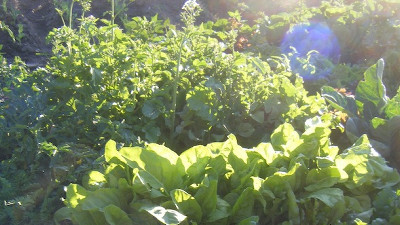Battle between Monsanto and scientists who complain about damage to surrounding farmland, which promotes the sales strategy of a powerful herbicide "Dicamba"

Chemical manufacturer "Monsanto Company(Monsanto)"Has recently been known as a potent herbicidal effect"Dicamba (Dicamba)"We are strongly promoting the sale of dicamba-resistant crop seeds, and in Japan the cultivation and import of dicamba resistant soybean (MON 87708 line) has been approved for safety in Japan. However, botanists are calling out against the use, as fatal "defects" over dicamba cause great damage to the crops of the surrounding farmland.
Monsanto Attacks Scientists After Studies Show Trouble For Weedkiller Dicamba: The Salt: NPR
http://www.npr.org/sections/thesalt/2017/10/26/559733837/monsanto-and-the-weed-scientists-not-a-love-story
It is said that the tension relationship between Monsanto and a botanist in the United States was born when Monsanto adopted a strategy to promote the old dairy herbicide as "dicamba" in its entirety. Monsanto was successful worldwide by selling a strong glyphosate herbicide "Roundup" and seeds of genetically modified varieties with resistance to tolerance, but in recent years it has a round-up tolerance We are confronted with problems such as the appearance of weeds and patents on seeds of Roundup-resistant soybeans and there is a circumstance that we need the pillar of new business, which is said to be a dicamba sales promotion strategy That's it.
Although dicamba itself is an herbicide known for a long time, Monsanto developed genetically engineered seeds of dicamba resistant soybeans and cotton. Dicamba that has strong herbicidal action and kills all crops does not affect genetically modified tolerance crops. Therefore, farmers using the combination "dicamba + genetically modified crop" can easily harvest weeds and harvest crops, so there is a great demand there, and similar to the round-up herbicides like dicamba and seed set sales Monsanto is trying to take the strategy.
But scientists have raised concerns about "volatile" which is characteristic of dicamba. Dicamba is sprayed as agricultural chemicals, but because it has high volatility, if it is sprayed in the hot summer season it evaporates and spreads over the air by the wind and it may cause damage to other crops It is thought.
Monsanto, who was pointed out as a big "defect" of this dicamba, announced that it solved the problem by developing a "low volatile dicamba" which does not easily evaporate. In response to this announcement, experts tried to verify the truth, Monsanto said that it was not possible to conduct verification experiments by handling the low volatility improved dicamba as a proprietary (exclusive) product. Dr. Bob Scott of the University of Arkansas said, "We should have done more tests, we wanted to do long-term testing for years, but we could not use the product." I will.

When Monsanto's low volatile dicamba was approved in the US in 2016, dicamba resistant crops were planted in 26 million acres of land in Arkansas. A new dicamba that dramatically eases control of weeds that are difficult to control is received overwhelmingly from farmers, says Scott Bertridge, vice president of global strategy at Monsanto.
However, when the spraying of dicamba started, damage to crops such as soybeans, vegetables, fruits and the like in the surrounding fields exceeded the range of the farmland where dicamba was sprayed. The damage occurred in the states of Mississippi, Minnesota, Missouri, Tennessee, and Arkansas was in the worst category.

Dr. Kevin Bradley, former chairman of the American Society of Herbics Studies, gathered data on crop damage throughout the United States and mapped the location of the damage to the dicamba. As a result, it is estimated that by the end of the summer 2017 at least 3.1 million acres of crops suffered some damage from dicamba drifting.
Monsanto said Monsanto was caused by not using dicamba according to the correct usage, such as farmers using dicamba are not spaced sufficiently apart or using improper nozzles, Denial the product problem. As Patrage vice president says, "All problems can be corrected with correct education," there is no problem with the product and we are not losing our commitment to selling.
However, Dr. Bradley and botanists believe that the explanation of Monsanto is only a part of the cause, and the problem can not be solved so easily. According to Monsanto's claim, the dicamba scattered by the wrong usage method is caused by the physical movement such as being blown by the wind and the damage should be small so as to be inversely proportional to the distance from the sprayed place According to the data collected by Dr. Bradley, it is not necessarily so.
According to Dr. Scott's experiment, instead of spraying dicamba as a spray, putting soybeans in a tray in the soil for 48 hours, dicamba evaporated from the tray damaged soybean leaves and dampened growth I know that.

State of Arkansas is deliberating on the draft legislation prohibiting the use of dicamba during the summer growth period because dicamba can extensively damage surrounding farms. In response to this move, Monsanto is suing a lawsuit against the regulatory authority of Arkansas State, arguing that "it is an unfair ban on the basis of a scientific and unfounded theory." Dr. Bradley said, "We have made more farmers recognize what botanists are doing, and made them recognize that these studies are fair," Talking and stating that this is the only positive result from the dispute over dicamba.
Related Posts:







